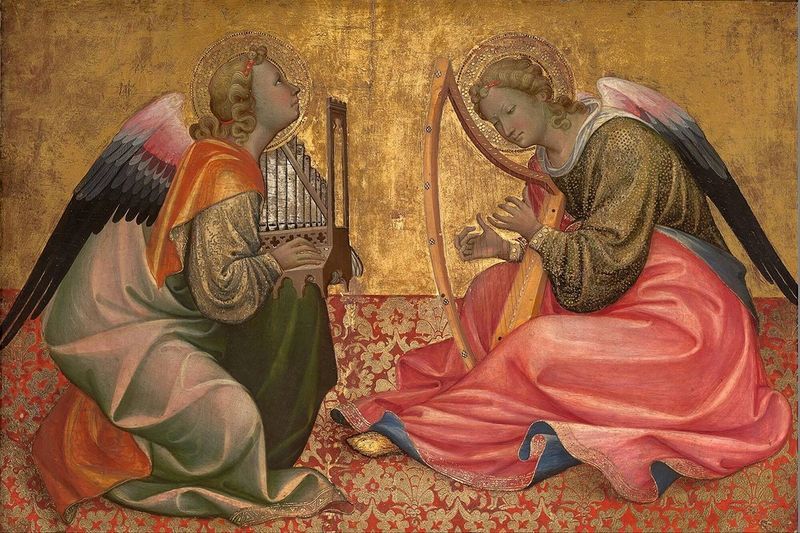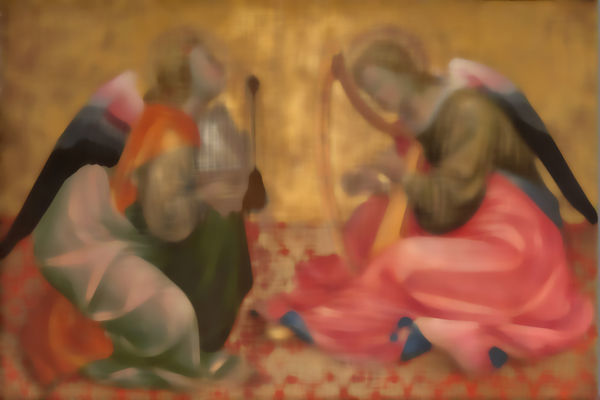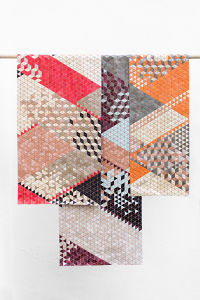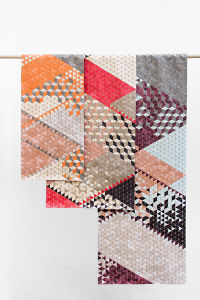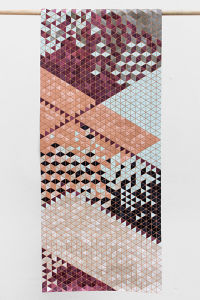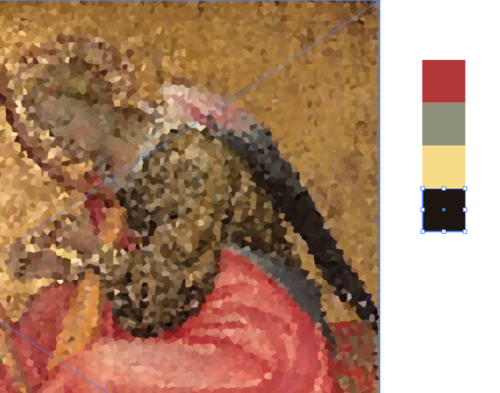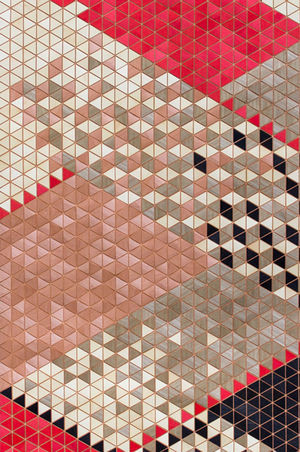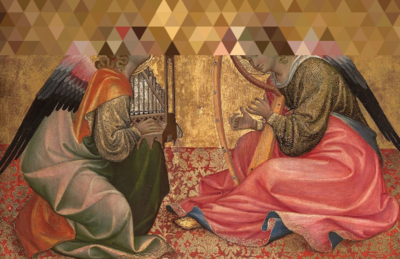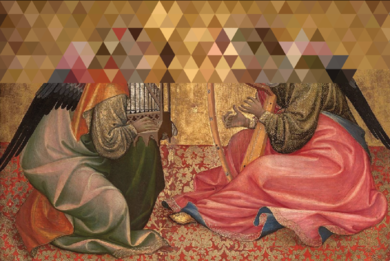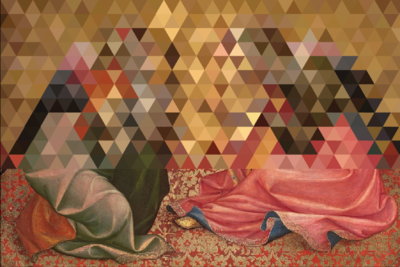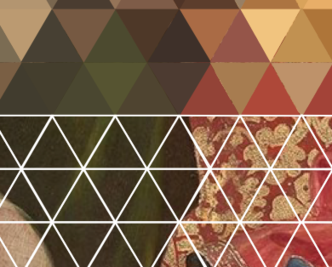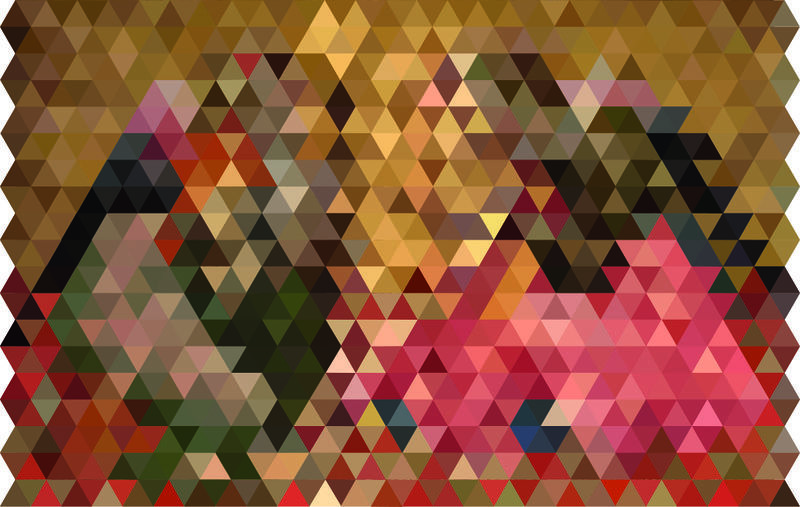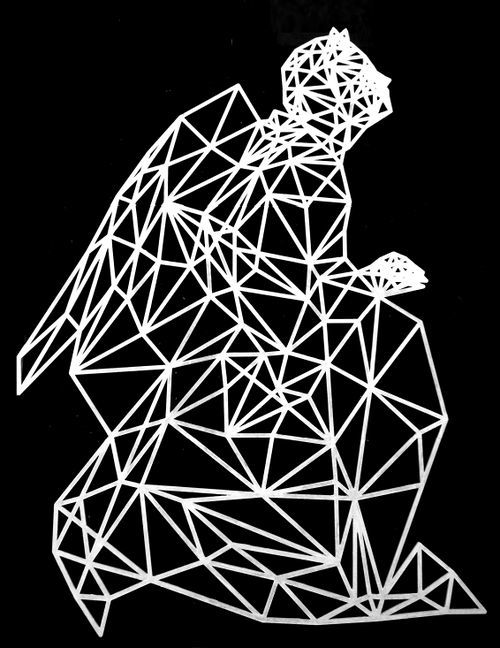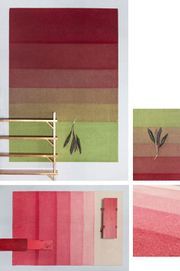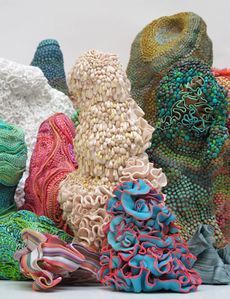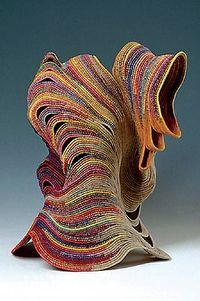User:Dionne/Process Fantastic Forgeries
Contents
ARTEFACT
Gherardo Starnina - Twee op de grond zittende, musicerende engelen / Two seated angles making music 1400-1410
WHY?
I choose this painting because I was attracted by the vibrant use of colors.
When I looked closer I noticed all the fine details and all the different textures that are painted.
Different textiles and other materials are being presented in the painting.
I though it would be a challenge to make something else out of a flat painting.
What also occurred to me was that the painting is only there to see, not to touch.
Although it shows so many different materials with interesting structures, still if you touched the painting, you would not be able to touch the structures.
This is something I want to keep in mind while designing the 'Copy' and' Transformation'.
I want to invite the user to touch the painting, instead of just looking.
RESEARCH
User:Dionne/Library Findings
Two seated angles making music
This painting was made by Gherardo Starnina between 1400 and 1410.
Starnina was a Florentine painter influenced by the International Style in Spain.
His paintings therefor got under the attention, because they were more detailed then other Florentine painters.
At that time Starnina was unknown, and his paintings where signed by: Maestro del Bambino Vispo.
The painting exists out of one angle looking up to 'something'.
This gesture revealed that this painting was part of a bigger altar piece.
Replica
Pixellating the painting through digital mediums
Through the use of photoshop I put different filters on top of the painting, to see which effect it has on the colors and recognition of the painting
Filter Pixel Facet
Filter Pixel Fragmentation
Filter Pixel Kleur Halftoon
Filter Pixel Mezzotint
Filter Mozaïk
Filter Pointilleren
Filter Ruis Mediaan
Filter Pixel Kristal
This last filter could be a tool for the digital replica version, maybe I can laser cut all these triangles on a certain material and paint them in all the right colors. This filter made me think about this work:
Elisa Strozyk
This colorful table runner is made out of wood. And I am really fascinated by the bright colors and I think I could use this as an inspiration source for this project. Elisa experimented with different kinds of wood and after laser cutting the triangles, she'll stick every piece by hand on the fabric.
With the use of the Kristal filter on the painting, I can pin point each color and put it in a list In Illustrator I can select every color with the 'pipet' tool, this would only take me forever..
Pipet Tool
I can also choose to redo the Kristal filter and set the percentage higher, this is the outcome:
Filter Kristal 15%
Filter Kristal 20%
The 20% would be better for me to pin point down the colors. And if I can make this on a big scale, then it doesn't matter that you can't recognize the painting from a close distance, once you step further away your eyes will adapt and you will see all the pixels blend together until you do recognize the painting again.
If you take a closer look at Elisa's work, you see that all the triangles have the same size and are positioned in the same way. But the Kristal filter gives shapes of different sizes and different positions, I quite like this irregularity, so I might try this instead of the same measurements.
First I want to analyze the work of Gherardo Starnina step by step, so that I understand what he has made.
In Illustrator I selected most of the colors out of the painting. The paining exists out of a lot of colors, I narrowed them down by making triangles and filled them with the right color.
The end result looks interesting, the angles aren't really recognizable even from a distance:
I want to categorize the colors and make five different color schemes: original, lighter, darker, brighter & softer.
Trangulation of the painting
I tried to transform the painting in to triangles, but not from the same size. Where there is more detail the triangles will look smaller, when there is less detail they will look bigger. For the replica I want to focus only on the left angle, because of the story that his head is up as a sign that this painting was part of a bigger altar piece.
Because the colors and different fabrics in the painting striked me the most, I want to fill some (or each) triangle with the fabric of the painting. I went out looking for the same fabrics, textures or colors.
Making the angle a 3D object
The triangulation of the angle looks very 3 dimensional, although my outcome is flat wood lasercut. After feedback I came to the conclusion to make a shot at Blender. Unfortunately deadline is almost there and it's the first time for me in Blender, so even with tutorial I found it difficult. So I'll make the object three dimensional myself.
The lasercut frame of the angle, I will use again, but this time as a base. Each point on the triangulation must have a different height when making it 3D. So I experimented with wooden sticks, after that I shaped chicken gaze over it so it becomes three dimensional. Unfortunately I only have a front view of the angle, so there is no back. (If I had more time I would make a backside). After the chicken gaze I stick paper to it with glue, and after it's dry, I form clay on top of it, to make it a solid object.
I want the sculpture to look different then most of the sculptures. I would like a bit of texture in it. That's why I added the clay in small pieces, without making it a smooth surface.
Transformation
Interesting parts of the paining are: the fabric details and the expression of all the different fabrics, the colors & gradients and the activities of the angles.
The angles are making music and this element may come back in the end result. Transform the angles into textile objects/sculptures with a specific shape. Characteristics are texture, textile, color, shape and sound. Experiment with fabric manipulations. With the use of sensors the textile will move and play a sound when someone touches it in a certain way. One will represent the organ (orgel) and the other the harp. The objects will have organic shapes and move on the rhythm of the sounds, so it all looks quite natural but strange at the same time. They will be made of different textile techniques, knit, weave etc. Some by hand some by machine.
rENs & Desso | Angelika Arendt | Ferne Jacobs
Translating the painting in a tangible textile experience
After weeks of struggling with my concept for the Replica, I had short time for the Transformation. What I love about the painting is all the different textures and colors, but unfortunately we are not supposed to touch this painting, and if we did we would not be able to feel these different structures.
That's why I want to re-make the painting by only looking at color, material and texture. Because I lack of time I have made a smaller piece, which is more a sample piece. But the idea is to have a big cloth, with a certain pattern with different textiles that have different textures, and are interesting and attracting to touch.
